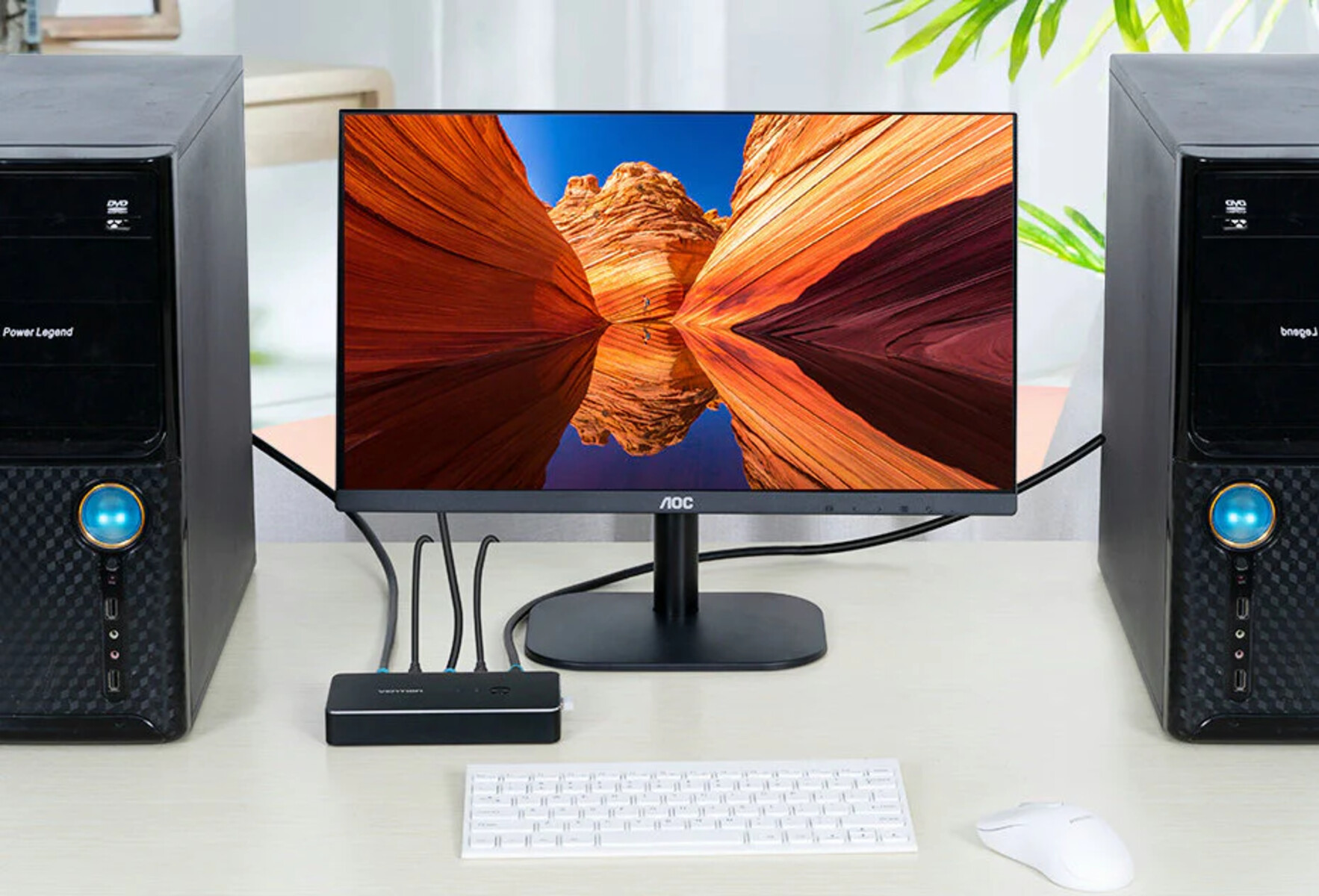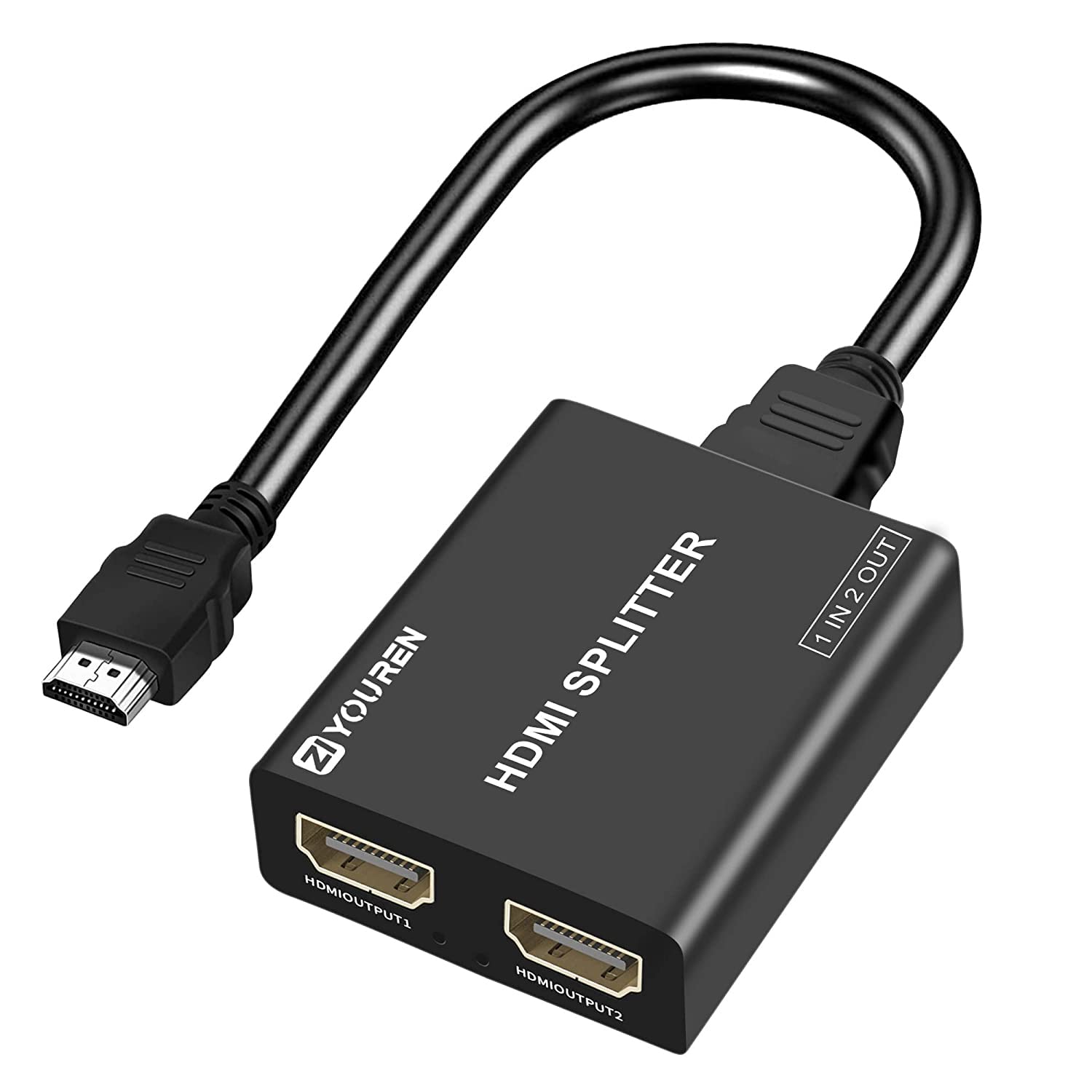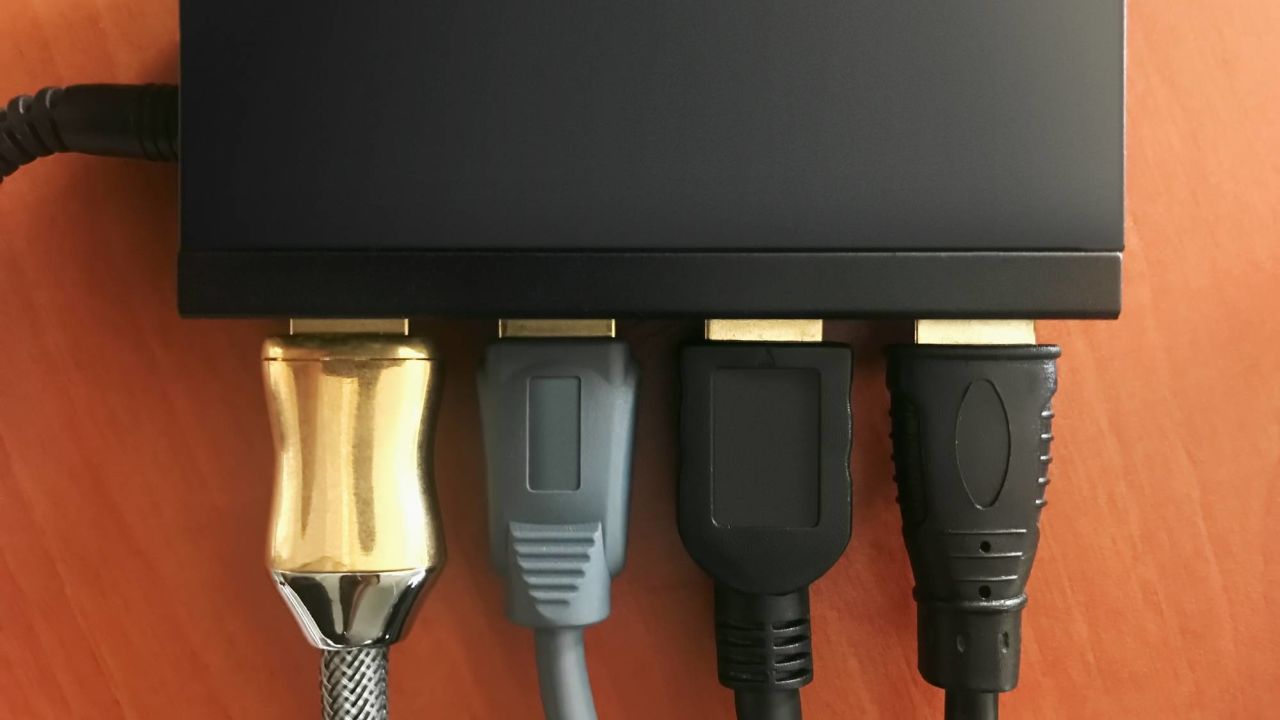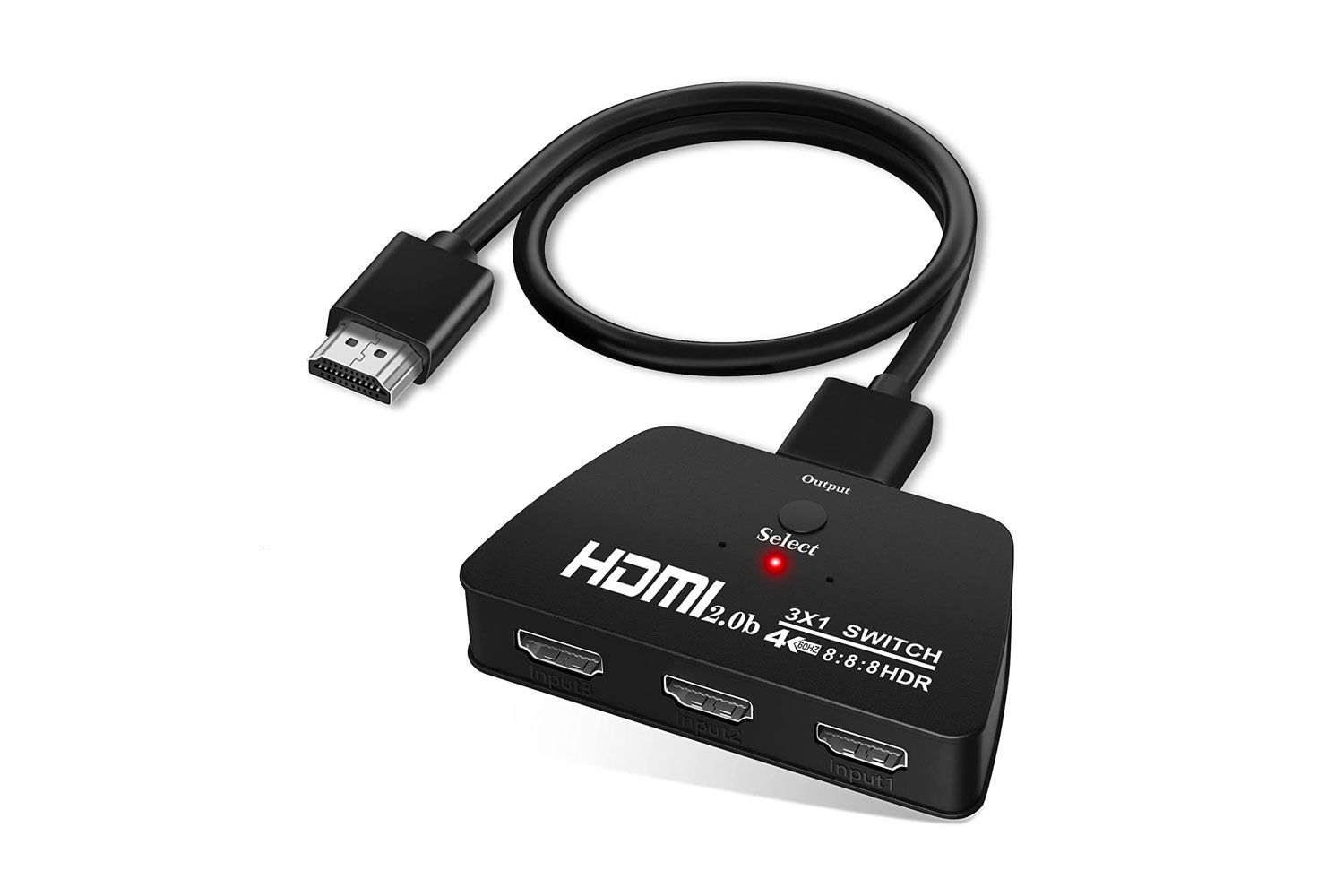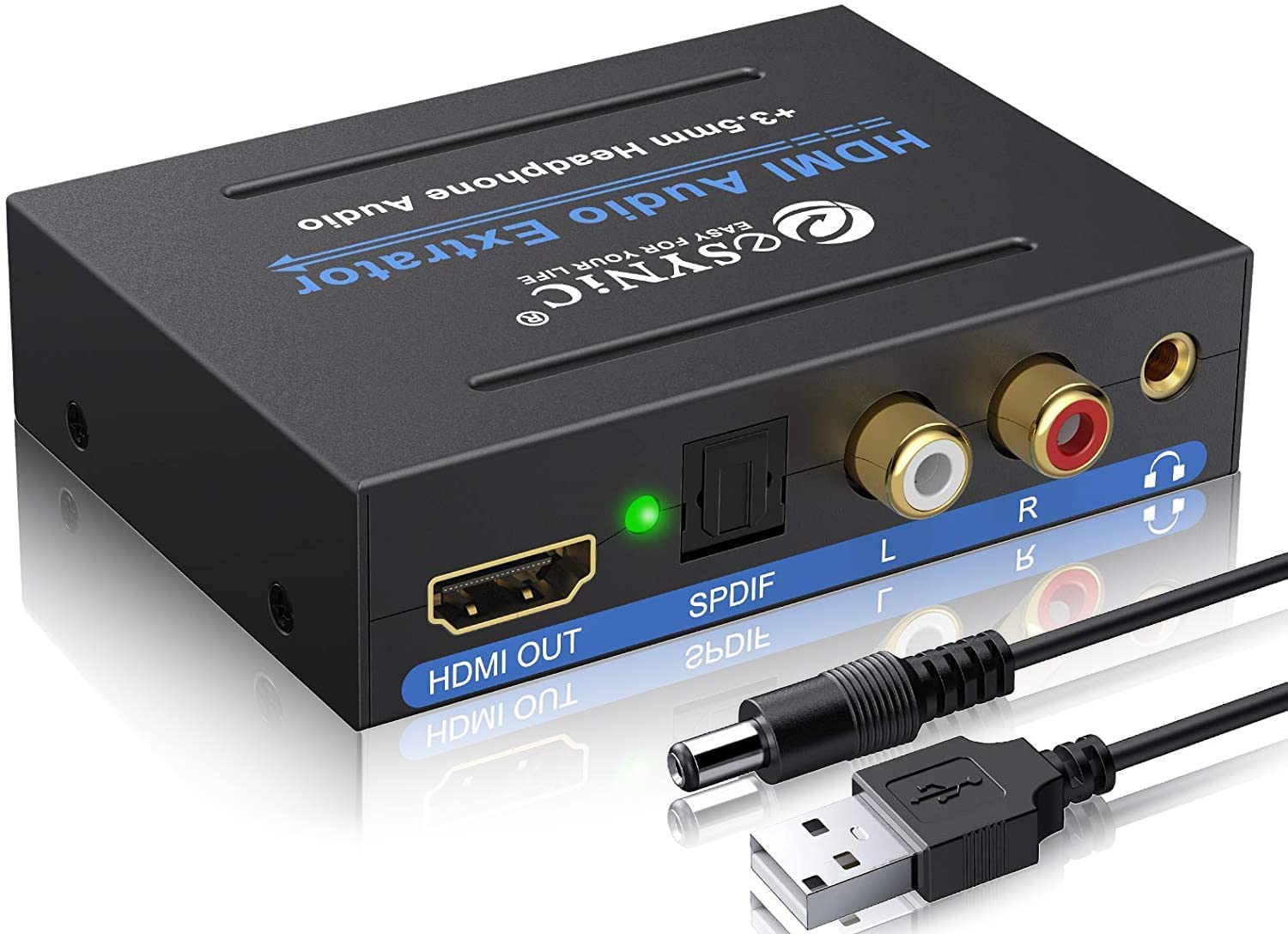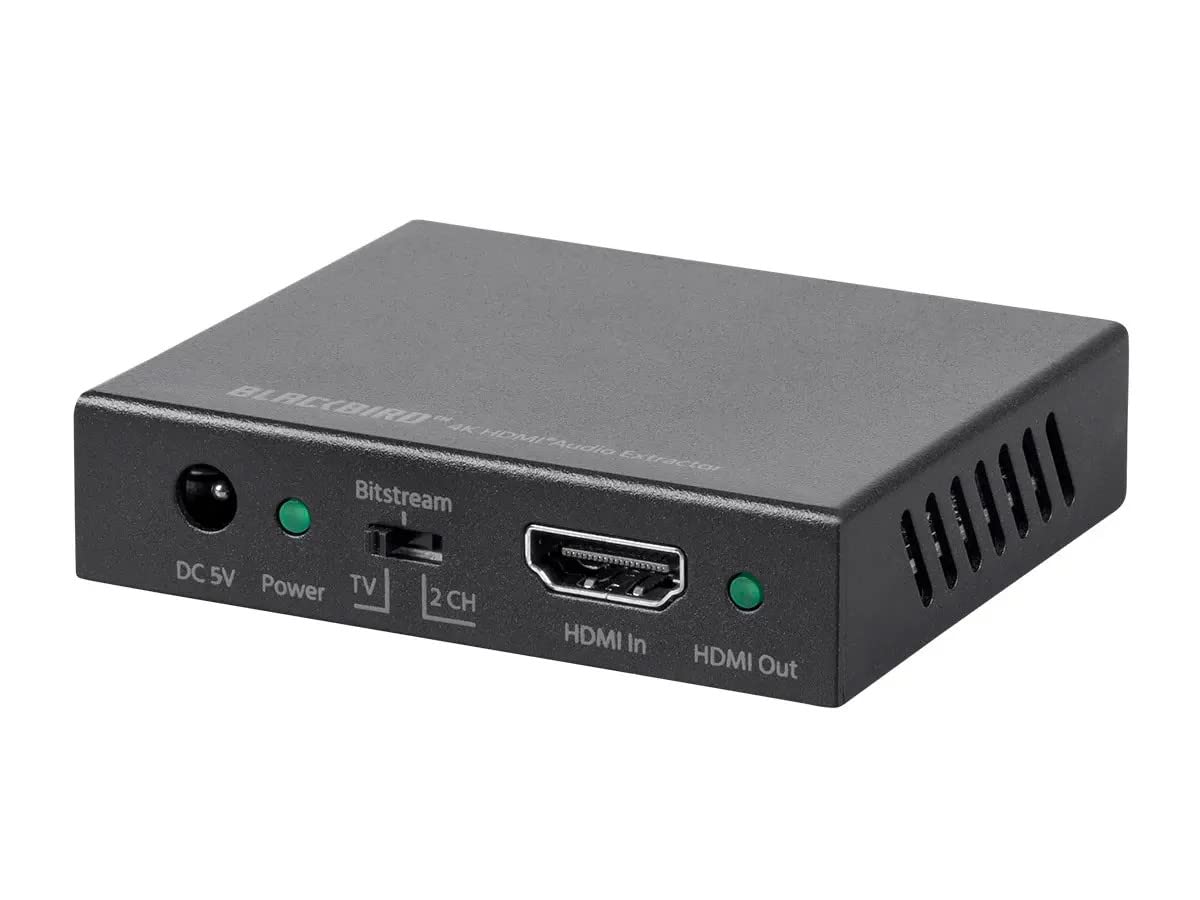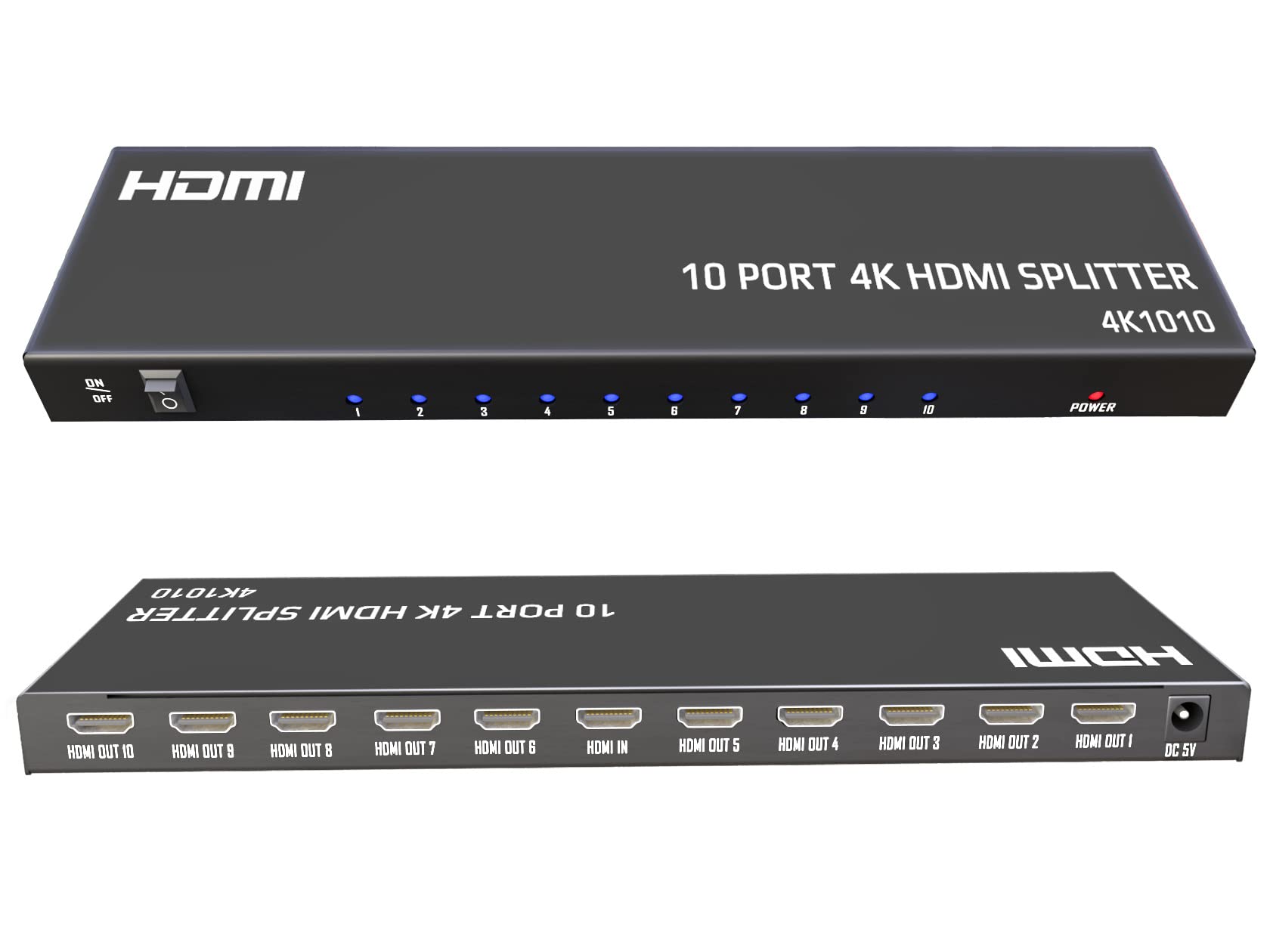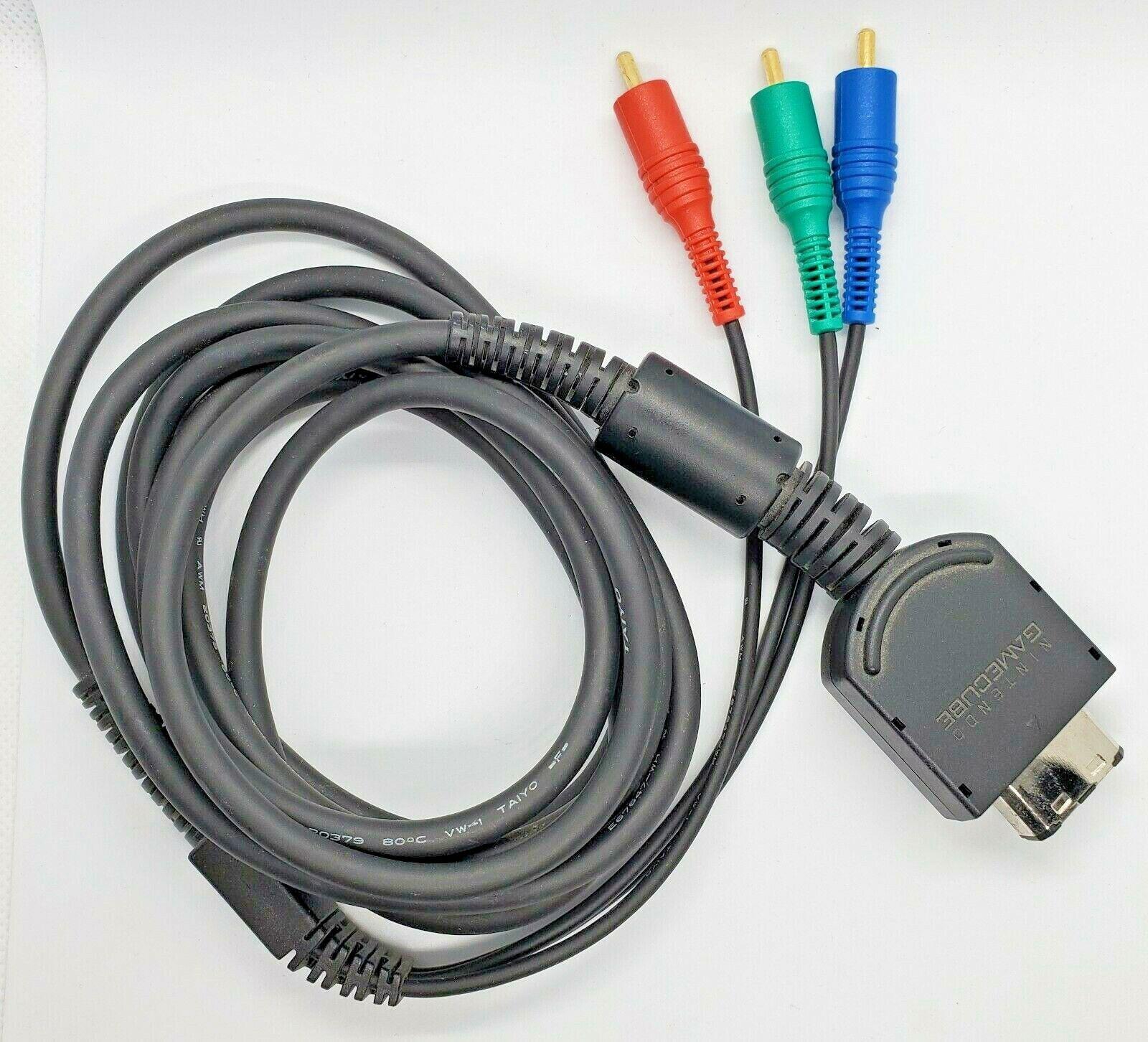Introduction
Welcome to the world of HDMI switches! In this digital age, where home entertainment systems are becoming more and more complex, having the ability to connect multiple HDMI devices to your TV or monitor is essential. That’s where an HDMI switch comes into play, offering a convenient solution to connect and switch between multiple devices with ease.
Whether you’re a movie buff with a collection of devices like gaming consoles, Blu-ray players, and streaming devices, or someone who wants to connect multiple computer monitors for increased productivity, an HDMI switch is a smart investment. This device allows you to eliminate the hassle of constantly swapping cables and provides a seamless way to enjoy your favorite content.
But how does an HDMI switch work? What are the different types available in the market? And what should you consider when buying one? In this article, we will delve into the fascinating world of HDMI switches, exploring their functionality, types, and considerations to help you make an informed decision.
So, if you’re ready to simplify your home entertainment setup or upgrade your multi-monitor workstation, join us as we unravel the mysteries of HDMI switches and reveal the secrets behind their seamless device connectivity.
What is an HDMI Switch?
An HDMI switch, also known as an HDMI selector, is a device that allows you to connect multiple HDMI sources to a single HDMI input on your TV, monitor, or projector. It acts as a central hub, enabling you to switch between different devices without the need to constantly plug and unplug cables.
HDMI switches are equipped with multiple HDMI inputs and one HDMI output. Each input can be assigned to a specific device such as a gaming console, Blu-ray player, streaming device, or computer. With the press of a button or through a remote control, you can effortlessly switch between the connected sources and enjoy crisp and clear audio and video signals.
These devices come in various sizes and designs to suit different needs. Some HDMI switches offer manual switching through physical buttons on the device, while others provide automatic switching that detects the active device and switches to it automatically.
One of the key advantages of using an HDMI switch is the convenience it offers. You no longer have to deal with the frustration of constantly swapping cables or reaching behind your TV to switch connections. HDMI switches make it easy to bring together multiple devices and enjoy them on a single display.
Another benefit of using an HDMI switch is that it helps to reduce cable clutter. Instead of having multiple HDMI cables running from different devices to the TV, you only need one cable connecting the HDMI switch to the display. This not only creates a tidier and more organized setup, but it also helps to minimize potential cable damage or wear and tear.
Overall, an HDMI switch is a versatile and helpful device that simplifies the process of connecting and switching between multiple HDMI devices. Whether you’re a tech enthusiast with an extensive collection of gadgets or simply want a more seamless and efficient home entertainment setup, an HDMI switch is an essential tool that brings convenience and flexibility to your digital life.
Why would you need an HDMI Switch?
Wondering why you would need an HDMI switch? Well, there are several scenarios where this nifty device can come in handy and greatly enhance your multimedia experience.
First and foremost, an HDMI switch allows you to connect multiple devices to a single HDMI port on your TV, monitor, or projector. This is particularly useful if you have limited HDMI ports available on your display. Rather than constantly swapping cables whenever you want to connect a different device, an HDMI switch provides a convenient way to expand your connectivity options.
If you’re a home entertainment enthusiast, an HDMI switch can be a game-changer. Imagine having a gaming console, Blu-ray player, streaming device, and set-top box all connected to your TV, ready to use at a moment’s notice. With an HDMI switch, you can effortlessly switch between these devices with just a push of a button, allowing you to enjoy a variety of content without the hassle of cable swapping.
For those who work with multiple computers or monitors, an HDMI switch can greatly enhance productivity. Whether you’re a graphic designer, programmer, or data analyst, being able to switch between multiple monitors with ease is invaluable. An HDMI switch allows you to connect and switch between different computers, laptops, or even workstations, enabling you to seamlessly transition between tasks without the need for additional cables or complex setups.
Another benefit of an HDMI switch is its compatibility with various HDMI-equipped devices. Whether you have an older gaming console, a new 4K Blu-ray player, or a streaming device, an HDMI switch can handle different resolutions and formats, ensuring that you can connect and enjoy your devices without any compatibility issues.
One of the most practical advantages of using an HDMI switch is its ability to reduce cable clutter. Instead of having multiple HDMI cables running from each device to your display, you only need one cable connecting the HDMI switch to your TV or monitor. This not only makes your setup neater and more organized but also eliminates the risk of cable tangling or accidental disconnections.
Overall, an HDMI switch offers flexibility, convenience, and improved connectivity options for both home entertainment enthusiasts and professionals. Whether you want to streamline your gaming setup, simplify your multimedia experience, or enhance your productivity, an HDMI switch is a valuable tool that allows you to make the most of your HDMI devices.
How does an HDMI Switch work?
Curious about the inner workings of an HDMI switch? Let’s take a closer look at how this device functions to seamlessly connect and switch between multiple HDMI sources.
At its core, an HDMI switch operates on a simple principle. It takes multiple HDMI inputs and directs the selected input to the HDMI output, allowing the video and audio signals to pass through from the connected source device to the display. This process is achieved through a combination of hardware and software components within the HDMI switch.
When you connect devices such as gaming consoles, Blu-ray players, or streaming devices to the HDMI switch’s input ports, the switch detects and recognizes these devices. This recognition can be done manually through physical buttons on the switch or automatically through smart-switching technology that detects the active device.
Once a specific device is selected or becomes active, the switch seamlessly routes the video and audio signals from that device to the HDMI output port. This allows you to view and hear the content on your TV or monitor without any loss in quality or latency.
Under the hood, an HDMI switch incorporates electronic components such as microprocessors, HDMI controller chips, and switching circuits to facilitate the signal routing process. These components ensure that the switch can handle different resolutions, refresh rates, and audio formats, providing optimal performance for a wide range of devices.
Moreover, modern HDMI switches often come with additional features to enhance the user experience, such as remote control capabilities, automatic input switching, and support for advanced video technologies like 4K Ultra HD and HDR (High Dynamic Range). These features make it even easier to manage your devices and enjoy high-quality content on your display.
It’s worth noting that an HDMI switch does not actively modify or enhance the video or audio signals passing through it. Instead, it serves as a conduit, allowing the signals to flow uninterrupted between the source devices and the display. This means that the quality of the content you’re viewing is primarily dependent on the capabilities and settings of your source devices and the display itself.
In summary, an HDMI switch works by intelligently routing the video and audio signals from multiple HDMI sources to a single output, ensuring a seamless and convenient switching experience. It combines advanced hardware and software components to handle different input sources, formats, and resolutions, providing an efficient solution to connect and enjoy your diverse range of HDMI devices.
Types of HDMI Switches
HDMI switches come in various types and configurations to cater to different needs and setups. Let’s explore some of the common types of HDMI switches available in the market:
- Manual HDMI Switch: This type of HDMI switch requires manual intervention to switch between connected devices. It typically features physical buttons or switches on the device itself. While manual switches are straightforward to use, they may be less convenient if you frequently switch between devices.
- Remote Control HDMI Switch: Remote control HDMI switches offer the convenience of switching between devices with the press of a button. They come with a dedicated remote control that allows you to switch inputs from a distance. Remote control switches are particularly useful when your HDMI switch is placed in an inconvenient or hard-to-reach location.
- Automatic HDMI Switch: Automatic HDMI switches are designed to detect the active input device and automatically switch to it. This type of switch eliminates the need for manual intervention or remote control, making it the most convenient option for seamless device switching. Automatic switches typically have priority settings, allowing you to prioritize certain inputs over others.
- Matrix HDMI Switch: A matrix HDMI switch provides the capability to connect multiple source devices to multiple displays. These switches allow you to route specific sources to specific displays, giving you greater flexibility and control over the distribution of video and audio signals. Matrix switches are commonly used in commercial setups and multi-room entertainment systems.
- Wireless HDMI Switch: Wireless HDMI switches utilize wireless technology to transmit audio and video signals from the source devices to the display. These switches eliminate the need for physical HDMI cables, providing a clean and clutter-free setup. Wireless HDMI switches are beneficial when you need to connect devices that are physically far apart or when running cables is not feasible.
Each type of HDMI switch has its own advantages and considerations. When choosing an HDMI switch, consider factors such as the number of input and output ports you require, the convenience of switching methods, the compatibility with your devices, and any additional features that may enhance your user experience.
It’s also important to note that HDMI switches are available in different versions, such as HDMI 1.4, HDMI 2.0, and HDMI 2.1. These versions determine the supported resolutions, refresh rates, and features. Make sure to choose an HDMI switch that is compatible with the highest resolution and features of your source devices and display to ensure optimal performance.
Understanding the different types of HDMI switches will help you make an informed decision based on your specific needs and preferences. Whether you prefer manual control, remote convenience, automatic switching, or matrix capabilities, there is an HDMI switch out there that will meet your requirements and enhance your multimedia experience.
Things to consider when buying an HDMI Switch
Choosing the right HDMI switch requires careful consideration of several factors. Here are some key things to keep in mind when you’re in the market for an HDMI switch:
- Number of Ports: Consider how many HDMI devices you plan to connect to the switch. Ensure that the switch you choose has enough input ports to accommodate all your devices. It’s also beneficial to have an extra port for future expansion.
- HDMI Version: Verify that the HDMI switch supports the HDMI version required by your devices. If you have 4K Ultra HD sources, make sure the switch is capable of handling the desired resolution and refresh rate. HDMI 2.0 or higher is recommended for optimal performance.
- Remote Control or Manual Switching: Decide whether you prefer a remote control HDMI switch for convenient device switching or if you’re comfortable with manual switching using physical buttons on the device. Consider your setup and usage scenario to determine which option suits you best.
- Automatic Switching: If you want a seamless and hassle-free switching experience, look for an HDMI switch with automatic switching capabilities. This allows the switch to detect the active device and automatically switch to it, eliminating the need for manual intervention.
- Compatibility: Ensure that the HDMI switch is compatible with the video and audio formats supported by your devices. Check for features like HDCP (High-bandwidth Digital Content Protection) compliance to avoid any potential playback or content protection issues.
- Additional Features: Consider any additional features that may enhance your user experience. This could include support for audio extraction, picture-in-picture (PiP) functionality, 3D video support, or advanced audio formats like Dolby Atmos or DTS:X.
- Build Quality and Design: Look for an HDMI switch that is well-built and designed to withstand frequent use. Consider the size, aesthetics, and placement options of the switch to ensure it fits seamlessly into your setup.
- Customer Reviews and Ratings: Read customer reviews and ratings of the HDMI switch you’re interested in to gauge its reliability, performance, and user satisfaction. Pay attention to any recurring issues or concerns mentioned by users.
- Budget: Set a budget for your HDMI switch purchase. Prices can vary depending on the brand, features, and build quality. Determine your budget range and find a switch that offers the desired features within that price range.
Considering these factors will help you make an informed decision and choose an HDMI switch that best suits your needs. Remember, it’s important to strike a balance between the features you require and the price you’re willing to pay to ensure you get the best value for your money.
Setting up an HDMI Switch
Setting up an HDMI switch is a relatively straightforward process. Here are the general steps to follow:
- Identify the necessary cables: Determine the HDMI cables needed to connect your devices to the HDMI switch. Make sure you have enough cables for each device and a separate cable to connect the HDMI switch to your TV or monitor.
- Choose the optimal location: Decide where you want to place the HDMI switch. Consider accessibility, cable length, and the proximity to your devices and the display. Ensure that there is sufficient space and proper ventilation around the switch.
- Connect the devices: Connect your HDMI devices to the HDMI switch using the HDMI cables. Insert one end of the cable into the HDMI output port of the device and the other end into the corresponding input port on the HDMI switch. For devices that require power, ensure they are plugged into a power source.
- Connect the HDMI switch to the display: Connect one end of an HDMI cable to the HDMI output port of the switch and the other end to the HDMI input port on your TV or monitor.
- Power on the devices: Turn on the devices connected to the HDMI switch, including the switch itself. Ensure that all devices are powered on and set to the appropriate input/source or channel.
- Test the connection: Switch to the desired input/source on the HDMI switch using either the manual buttons or the remote control. Check if the video and audio signals are properly transmitted to the display. Make any necessary adjustments to the settings of your devices or the switch to ensure optimal performance.
- Organize cables: Tidy up the cables and secure them using cable ties or clips to minimize visual clutter and potential cable damage. Label the cables to easily identify the connected devices.
- Enjoy your setup: With the HDMI switch successfully set up, you can now enjoy seamless device switching and uninterrupted audiovisual experience. Switch between your connected devices as needed and enjoy your favorite content on the display.
Though the general steps outlined above are applicable to most HDMI switch setups, it’s essential to refer to the user manual or instructions provided by the manufacturer for specific guidance and any additional setup requirements or considerations for your particular HDMI switch model.
Remember, if you encounter any issues during the setup or experience any connectivity problems, refer to the troubleshooting section of the HDMI switch’s user manual or contact the manufacturer’s support for assistance.
Troubleshooting common issues with HDMI Switches
While HDMI switches are generally reliable and easy to use, you may encounter certain issues during setup or operation. Here are some common problems that users may come across with HDMI switches and potential troubleshooting steps:
- No signal or video/audio loss: If you’re not getting any video or audio signal on your display, check the connections between the devices and the HDMI switch. Ensure that all cables are securely plugged in. Try switching to a different HDMI input on the switch to see if the issue is specific to a particular input port. Also, verify that the connected devices are powered on and set to the correct input/source.
- Resolution or display issues: If you experience resolution mismatch, flickering, or distorted video, check the HDMI version compatibility between the devices and the switch. Ensure that the highest supported resolution of your devices is compatible with the capabilities of the switch. Adjust the display settings on your devices to match the supported resolution of your TV or monitor.
- Audio problems: If you’re experiencing audio issues, such as no sound or intermittent audio, check the audio settings on both the connected devices and the HDMI switch. Ensure that the audio format output by the device is supported by the switch and the display. Additionally, confirm that the audio output settings of the devices are correctly configured.
- Remote control malfunction: If the remote control of the HDMI switch is not functioning correctly, try replacing the batteries and ensure that there are no obstructions between the remote and the switch. Check if there are any infrared interference sources in the vicinity, such as other electronic devices or bright lights, and relocate the switch if necessary.
- Device recognition issues: If the HDMI switch is not detecting or recognizing certain devices, double-check the connections and make sure they are securely plugged in. Try power cycling the devices by turning them off and on again. If the issue persists, check for any firmware updates for the HDMI switch that could potentially resolve compatibility or recognition issues.
- Switching delays: If you experience delays when switching between the connected devices, try adjusting the priority settings on the HDMI switch if available. Some switches may have settings that allow you to set certain inputs as priority sources, ensuring faster and more responsive switching. Additionally, ensure that the devices are updated with the latest firmware to optimize performance.
If you have tried troubleshooting the common issues as mentioned above and are still encountering problems with your HDMI switch, it is recommended to consult the user manual or contact the manufacturer’s support for further assistance. They will be able to provide you with specific troubleshooting steps or may advise you on potential hardware or compatibility issues that require additional attention.
Remember that every HDMI switch may have its unique troubleshooting requirements, so referring to the manufacturer’s documentation is crucial for a successful resolution to your specific issue.
Conclusion
An HDMI switch is a versatile device that offers a convenient way to connect and switch between multiple HDMI sources on a single display. Whether you’re a home entertainment enthusiast with a variety of gaming consoles and media players or a professional seeking to enhance productivity with multi-monitor setups, an HDMI switch can greatly simplify your digital life.
We explored the different types of HDMI switches available, including manual, remote control, automatic, matrix, and wireless options. Each type offers unique features and benefits to suit various needs and preferences.
When purchasing an HDMI switch, it’s important to consider factors like the number of ports, HDMI version compatibility, switching methods, additional features, and budget. These considerations will help you choose the right HDMI switch that meets your requirements and enhances your multimedia experience.
Setting up an HDMI switch is a straightforward process involving connecting devices, managing cables, and testing the connection to ensure proper functionality. By following the recommended setup steps and referring to the manufacturer’s instructions, you can easily enjoy seamless device switching and uninterrupted audiovisual experiences.
In the event of common issues such as no signal, video/audio loss, resolution problems, or remote control malfunction, troubleshooting steps like checking connections, adjusting settings, and updating firmware can often resolve the problems. However, if issues persist, it’s always best to consult the manufacturer’s support for personalized assistance.
In summary, an HDMI switch is an indispensable tool for simplifying connectivity and improving efficiency in your digital setup. With its ability to seamlessly connect and switch between devices, an HDMI switch enhances your entertainment enjoyment and empowers you to create a more productive work environment.
So, whether you’re a tech-savvy individual or a professional seeking a seamless multimedia experience, consider adding an HDMI switch to your setup and unlock the full potential of your HDMI devices.







